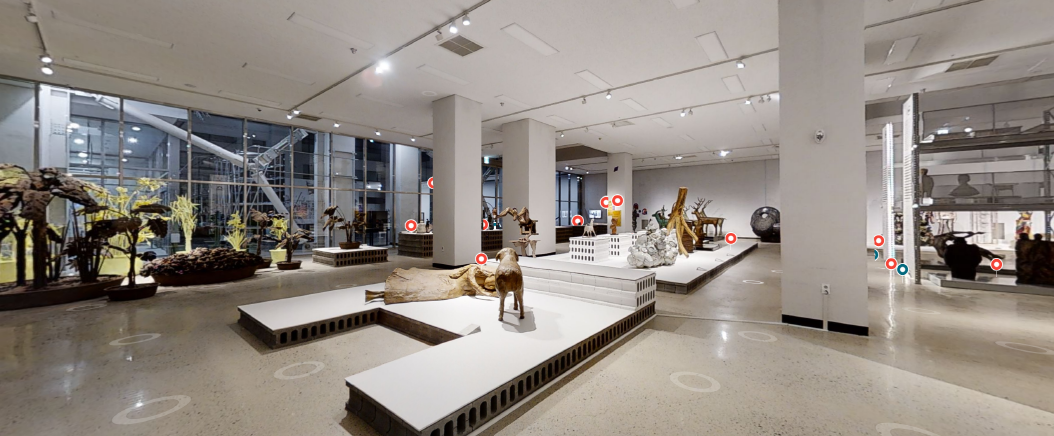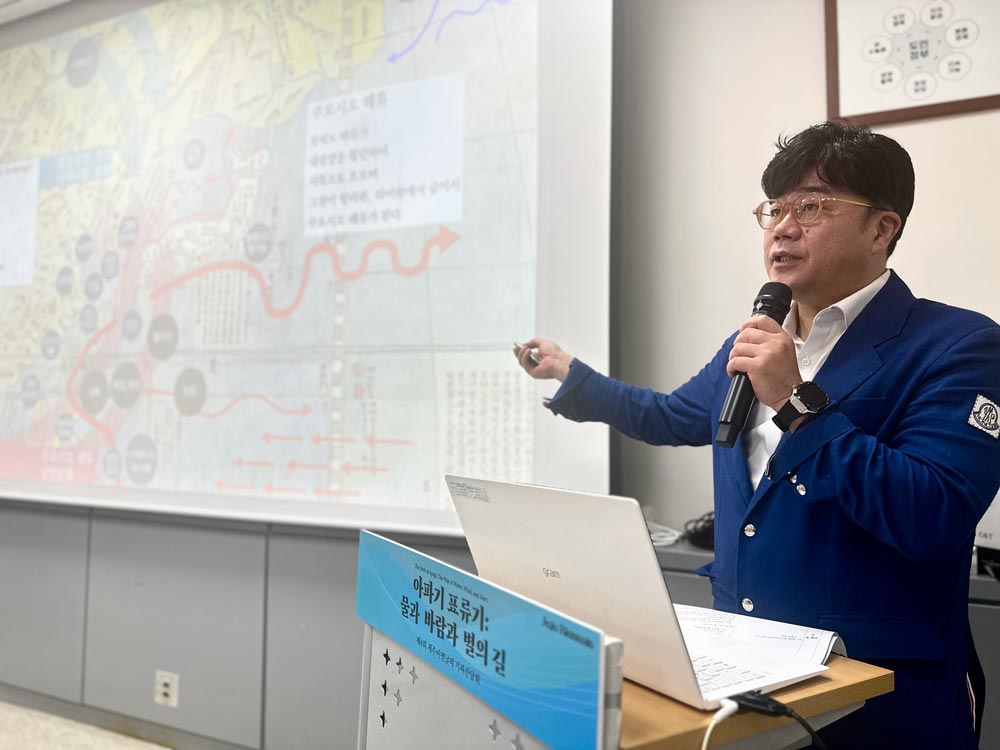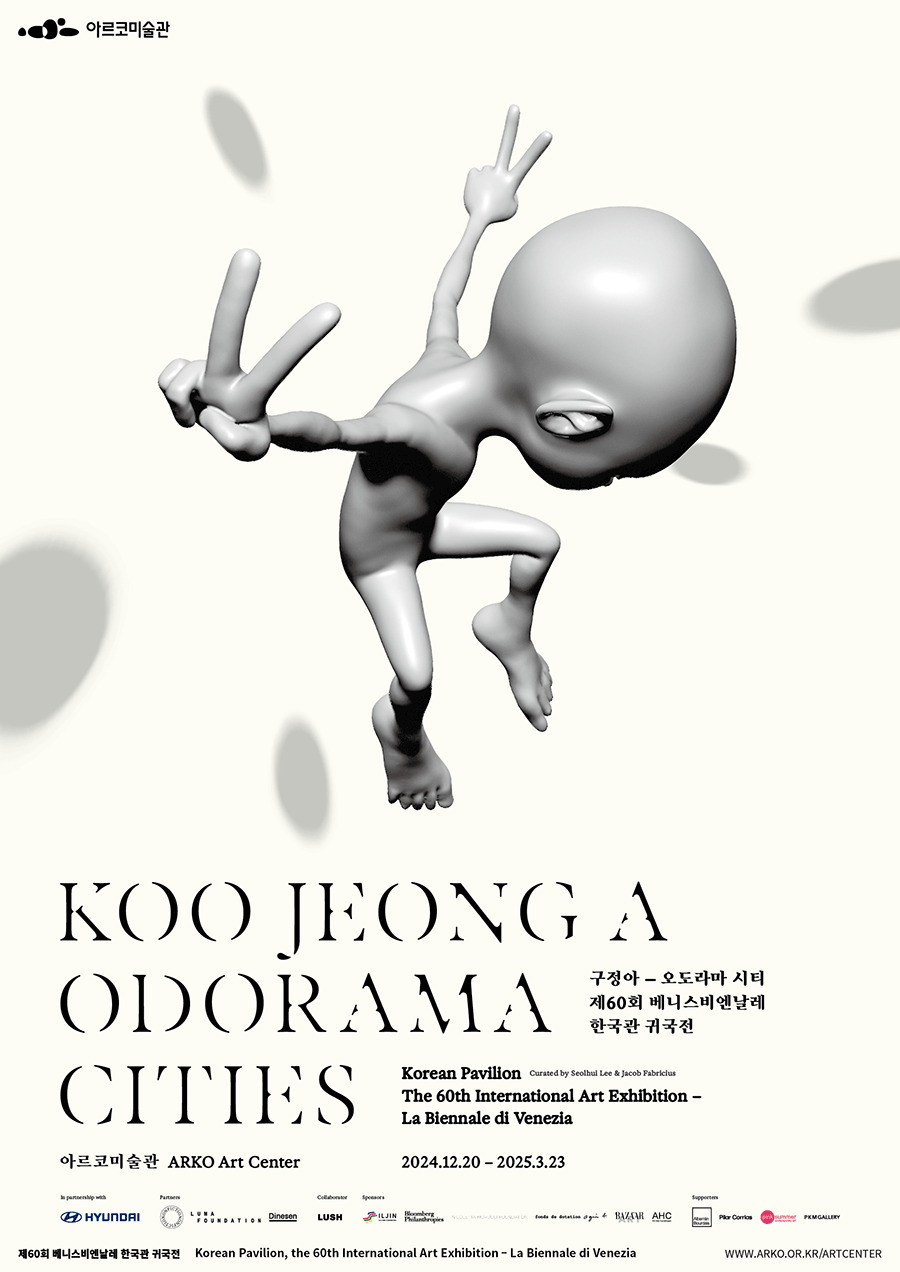The National Museum of Modern and Contemporary Art, Cheongju (MMCA Cheongju), which opened its doors in 2018, operates visible storage that is accessible to the public.
 Captured image of MMCA’s ‘VR Tour for Open Storage.’ © National Museum of Modern and Contemporary Art, Korea.
Captured image of MMCA’s ‘VR Tour for Open Storage.’ © National Museum of Modern and Contemporary Art, Korea.Today, few people would think that museums should only present art and culture curated by experts. The paradigm of museums driven by authorities has long since shifted. In the era of cultural democracy, museums no longer consider the public as passive consumers of culture but rather as active participants capable of interpreting and producing knowledge through museum collections.
These changes are already evident in the evolving concept of “curation.” Initially, the term referred to the practice of curators selecting and exhibiting historically significant and exceptional artworks or artifacts in museums. Nowadays, the meaning of “curation” has expanded, and it now encompasses the act of selecting quality content from any field by individuals from diverse backgrounds and reclassifying and combining it to create
One of the changes has taken place in the museum’s storage. Today’s museums aim to be open to the public, accessible, and inclusive, as well as to further foster diversity and sustainability.
In the case of art museums, the artworks we see in the exhibition spaces are actually just a small fraction of the museum’s entire collection. Most artworks are either dismantled or packed in storage boxes and stored in the museum’s storage facilities, and in most cases, these artworks never make it out of the gallery once they’re in storage.
With a growing understanding of the need to make as much of a museum’s collection available to the public as possible, museums have been looking for ways to increase public access to their extensive collections.
 MMCA Cheongju Art Storage Center. Photo by Aproject Company.
MMCA Cheongju Art Storage Center. Photo by Aproject Company.
Museums in the United States and Europe were among the first to initiate such efforts. Since the 1970s, they have been exploring various methods to provide the public with opportunities to engage with and explore their collections.
One significant outcome of these endeavors is the concept of “visible storage.” The idea of visible storage is to show as much of the collection as possible to the public so that they can appreciate and interpret the works independently.
Indeed, contemporary art poses challenges when it comes to presenting artworks in visible storage due to the diverse range of forms, sizes, and mediums that it encompasses. Among many contemporary art museums with visible storage, the Schaulager in Basel, Switzerland, stands out as a prime example. Established in 2003, the Schaulager was specifically designed to accommodate contemporary art collections and provide a seamless integration of visible storage within its exhibition spaces.
The Schaulager showcases a collection of contemporary art spanning a wide spectrum, from avant-garde art collected by a couple starting in the early 1920s to paintings, sculptures, installations, and video works. It has become a source of inspiration for many art museums that aspire to have visible storage.
However, visiting the Schaulager requires following strict procedures, as it operates its visible storage on a reservation basis, making it accessible to experts, students, and other professionals. The periods when it is open to the public are also very limited.
 Partial building structure and façade, Fondation Laurenz Schaulager. © Laurenz-Stiftung, Schaulager.
Partial building structure and façade, Fondation Laurenz Schaulager. © Laurenz-Stiftung, Schaulager.On the other hand, taking inspiration from the Schaulager, the National Museum of Modern and Contemporary Art, Cheongju (MMCA Cheongju), which opened its doors in 2018, operates visible storage that is accessible to the public.
The concept of visible storage, which dates back to the 1970s, is a well-established model worldwide. Therefore, the MMCA Cheongju, which opened its doors just five years ago, joined this global trend relatively late. The planning for the Cheongju branch of the MMCA began in 2012, when Jeong Hyeongmin was appointed the 18th director of the MMCA, prior to the opening of the Seoul branch in 2013.
During that time, the MMCA was facing overcrowding in its storage spaces in Gwacheon and Yeoju, and there was a growing need for a facility to systematically store and manage artwork in preparation for the opening of the Seoul branch. In addition, the need for an integrated management system for government-owned artworks and works held by the Art Bank, which were previously managed separately, was recognized. The increasing number of contemporary artworks, which were not limited by size and had diverse materials, also required the implementation of appropriate measures for their storage and management.
 Captured image of MMCA’s ‘VR Tour for Open Storage.’ © National Museum of Modern and Contemporary Art, Korea.
Captured image of MMCA’s ‘VR Tour for Open Storage.’ © National Museum of Modern and Contemporary Art, Korea.The emergence of visible storage in Korea reflects the changing role of museums. Since the establishment of the MMCA Cheongju, numerous art museums in Korea have embraced the trend of implementing visible storage. These facilities operated by local art museums should go beyond merely showcasing artworks to the public and contribute to the development of contemporary art by exploring new directions and implementing diverse programs. Just as the Schaulager’s open storage clearly demonstrates a strong commitment to fostering active research in contemporary art.



















